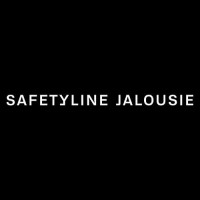-
Australia
Copyright © 2025 Powered by BCI Media Group Pty Ltd
Confirm Submission
Are you sure want to adding all Products to your Library?
Contact Detail
26 Nov 2021 by Safetyline Jalousie

The most life-threatening element of a fire is the inhalation of smoke. The second critical risk is the flash over caused by the very high temperature inside the building that could generate explosion or extensive damages to the building structure, with the consequent collapse.
For avoiding these dangerous events and keeping escape routes clear for longer, and also to ensure that first responders can quickly and safely locate and extinguish a fire, a natural smoke and heat exhaust system (NSHEV) must be integrated in a building project’s fire protection concept.
In accordance with the current European standard EN 12101-2, NSHEVS are regarded as a unit comprising an opening element and an electric motor, with these two components being tested and approved as a whole. The NSHEVS consist in a system of automatic opening windows linked to the Building Management System or Fire Indication Panel and can be opened within seconds of smoke being detected.
Smoke ventilation based on natural forces does not only create safety and security for the occupants of the building. The openings in the façade can also be used daily to provide natural ventilation for a pleasant and energy saving indoor climate.
Safetyline Jalousie louvre windows can be used for the above functionality, with the JX Louvre window and SLJ01 EXT louvre motor. Together as a complete solution encompassing both the glass and aluminium louvre blade variants, they have been tested at an accredited Applus+ facility to the (NSHEV) standard EN12101:2 Annex G.
The objective of the Annex G Heat exposure test, Reaction to fire, is to establish the ability of the installed ventilator to open under exposure to heat and to remain in the fire open position with not more than 10% reduction of the throat area.
The vent in the chamber is taken up to 300 degrees Celsius, then after 5 minutes opened to its fully open position (which must be done in under 60 seconds), and stay that way for the rest of the 30 minutes.
Navigating the legal requirements and best practice to smoke control systems can be a complex task for designers, contractors and building owners. The rigorous testing set out by the stringent EN12101 standard provides the assurance of the reliability that the product has been developed, tested and manufactured to deliver the performance necessary to protect both the occupants and property in the event of a fire.





Save Company
Add All Products to My Library
Send Meeting Request to this Supplier